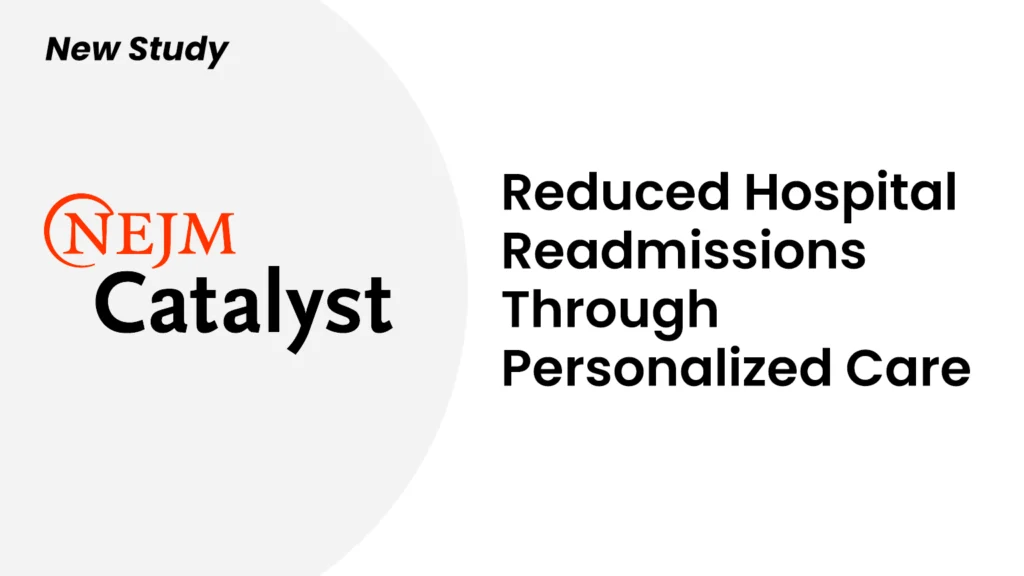By the time you have reached the sixth and final step of the buyer’s journey in the WELL Health® Definitive Buyer’s Guide to a Patient Communication Platform, you have already identified the top unified communication platforms with patient-centered communication tools and have decided which vendor is your first choice. Now, to get the cost approved by key decision-makers, you need to build a good business case by quantifying the cost by reiterating the benefits of a patient communication solution. You can further strengthen your case by discussing how much time and money a top unified communication platform will save your organization. Illustrating the impact that the solution will have through data analysis is one of the best ways to convey the value of the patient communication platform you choose. If your first choice for a vendor has an ROI tool, check with the vendor that their tool has the ability to provide an ROI build based on actual data from real client experience.
Benefits of top unified communication platforms and patient-centered communication tools
Healthcare systems invest in the benefits of unified communication platforms to streamline and improve numerous operational measures such as increasing patient satisfaction and engagement or reducing staff time spent on common tasks. A unified patient communications platform is used by front office staff, clinical support teams, call center departments, billing staff, and more, to centralize patient communication activities. Patient communication platforms have the flexibility to tackle the evolving priorities associated with running a successful health care system. The top unified communication platforms work with your internal teams on how to best use their solution to meet your organization’s specific needs and can collaborate with your existing tech stack. They have sales and implementation teams to work with your organization to understand the milestones, targets, and KPIs that are important to you. When working with top unified communication platforms, within weeks of the solution’s Go-Live, health systems can generally see meaningful, measurable data results. Implementing a unified platform for users who participate in different parts of the patient’s care journey also helps ensure smooth handoffs and clarity across all staff members in supporting the patient.
Key results of top unified communication platforms and patient-centered communication tools
To further build your business case, list the most significant impacts a patient communication platform will have on your organization. Ask your top vendor if they have case studies that can provide data and evidence on how their patient engagement platform made a positive impact on organizations similar to your health system.
Here are case study examples of the most common pain points health systems solve with a patient communication platform.
Reduce No-Show Rates
High patient no-show rates have a negative impact on healthcare. They damage provider revenue and prevent patients from receiving optimal care. Decreasing no-show rates is essential to maintaining or increasing a health system’s revenue.
Located in Northern California, Tiburcio Vasquez Health Center (TVHC) is an FQHC that caters to over 115,000 patients, a large proportion of which are Hispanic. The language barrier was making it difficult for TVHC physicians to connect with such a large volume of patients, resulting in high patient no-show rates and lost revenue. TVHC was using an outdated robocall reminder system that let patients know when their appointment was upcoming but the robocaller didn’t alert the health system when patients confirmed or canceled appointments. By implementing a top unified communication platform, TVHC overcame the language barrier issue and saw its no-show rate drop by 20% with confirmed bookings skyrocketing from 25% to 80%. Because a patient communication platform made communication easier and faster, patients were more likely to let TVHC know when they couldn’t make an appointment. That meant TVHC knew which slots would be available, and could schedule patients more efficiently. As a result, slot utilization increased, resulting in up to $1 million more in annual revenue.
Reduce Call Volume
A patient communication platform helps health systems reduce their inbound and outbound call volume by streamlining operations and improving staff efficiency. Reduction in staff time on the phone and a decrease in inbound call volume allows staff to focus on other priorities such as patient care and saves the health system additional costs on hiring phone personnel.
Before implementing a unified patient communications platform, the office staff at Eisenhower Health, a not-for-profit health system in California’s Coachella Valley were spending as much as two hours every day on the phone performing routine administrative tasks. After using a patient communication solution, the Eisenhower Health office staff saw the time they spent on the phone per day drop from as much as two hours to as low as 15 minutes, equaling a decrease of 88 percent.
Increase appointment confirmations and filling slots
By making it easy for patients to schedule and confirm appointments, a patient communication platform enables health systems to increase bookings and confirmations, ensuring all appointments are utilized, leading to reclaimed revenue.
Community Memorial Health System (CMHS) is a large community-owned, not-for-profit healthcare system servicing California’s Ventura County. CMHS had a legacy appointment reminder system that didn’t allow patients to respond to the reminder messages. Therefore, every day, CMHS staff had to call patients to make sure they were coming for their appointments. Phone tag led to low confirmations resulting in missed appointments and ultimately, lost revenue. After using a unified communications platform with patient-centered communication tools for two months, CMHS saw its no-show rate drop by 29 percent, resulting in an estimated $1,169,600 increase in annual revenue.
Reduce Staff Workload
A reduction in daily staff workload prevents worker burnout, cuts down on administrative costs, and increases staff morale.
Located in Grand Junction, Colorado, Rocky Mountain Orthopaedics (now SCL Health Medical Group), specializes in bone, joint, pain, and muscle care. Their legacy automated appointment reminder system didn’t provide many patient responses or confirmations due to its inconvenient calling time and overall inefficiency. The clinic also has a high volume of patient visits so when a practitioner called in sick, the office staff had to try to contact every single patient at the last minute which was disruptive and caused staff stress in trying to get ahold of so many patients. Implementing a patient communication system changed the practice’s workflows by reducing phone calls so that schedulers spent less time on the phone. The solution’s ability to send out text-message broadcasts to large numbers of patients was invaluable. If a provider could not work, the broadcast functionality enabled the clinic to tell large groups of people via text instead of phone calls. This helped to reduce staff workload, leading to less work pressure and more staff satisfaction.
Increase Referral Conversion
The ability to convert referrals to scheduled appointments leads to better patient outcomes and increased revenue.
Based in Chapel Hill, UNC Health (UNCH) is an integrated health care system comprised of many locations across North Carolina. Their rheumatology department received a high volume of referrals due to business growth, however, UNCH did not have more staff to schedule appointments so they implemented a top unified communication platform to assist with referral conversion. At UNCH, referral conversion is the ability to receive a referral order and convert it into a scheduled appointment. With the solution’s conversational messaging, UNCH was able to text its patients about setting up a referral appointment, and patients could instantly text or call back. This type of outreach proved more effective than sending messages through the patient portal or leaving phone voicemails that may not be heard. After three months of using the solution, UNCH Rheumatology improved its referral conversion rate from a disappointing 30% to consistently averaging a high of 75% every month.
Decrease Call Abandonment
Using a patient communication platform to reduce call abandonment leads to increased patient satisfaction and better customer service.
Located in California’s Central Valley, Altura Centers for Health is an FQHC that implemented a unified communications platform with patient-centered communication tools to help them reduce call volume. Altura participated in a pilot program for an innovative “Call to Text” feature which enables patients who call their providers to continue engagement via text messaging. Altura piloted Call to Text during the COVID-19 pandemic which clearly proved to them the value of the technology since, during COVID, they were short-staffed, yet were still able to handle a high volume of calls. Within 90 days of implementing Call to Text, Altura’s call abandonment rate dropped from 20% to 15%, a decrease in nearly 1,000 abandoned calls per month.
Complete Patient Satisfaction Surveys
Sending surveys from a provider’s phone number after an appointment increases the likelihood of surveys being completed which allows for healthcare organizations to follow up with patients, do service recovery, and improve patient satisfaction.
MemorialCare Medical Foundation is a Southern California healthcare organization employing 380 physicians. The institution regularly offers post-appointment surveys to patients to determine if they were satisfied with their experience. However, a low proportion of patients were clicking on the surveys, and an even lower proportion of those who did click were completing the surveys. After MemorialCare implemented a patient communication solution, clicks on the patient satisfaction surveys increased by 25%, and the number of patients who participated after clicking increased by 20%.
Increase Portal Enrollment
Increased portal enrollment delivers more patient engagement.
Renowned Los Angeles-based enterprise health system, Cedars-Sinai was eager to increase its portal enrollment rates. It was important that patients enrolled in their portal before their appointment so that they could verify their information and fill out their health histories online. Cedars-Sinai Hospital had an old activation method that had recently been updated to a link that was emailed to patients before appointments. However, portal enrollment was still not improving much, and sending the activation emails was disruptive to staff workflow. Within five months of sending the link out using a solution with patient-centered communication tools, Cedars-Sinai’s portal enrollment shot up by 19% overall. Clinic managers were also reporting increased portal usage meaning patients weren’t simply just enrolling in the portal, they were actually using it. This engagement allowed staff another way to communicate with their patients, resulting in both staff and patient satisfaction.
Top unified communication platforms can bring transformational change
As you can see by the data on the key results above, implementing a patient communication platform can often act as a catalyst for transformational change within an organization. Keep this in mind as you build your business case for the patient communication solution you are recommending to your team to purchase. By now you have done your due diligence in determining which solution is best for your organization.
Here is a brief review of each step in evaluating patient communication platforms:
- The first step is to consider your organization’s goals, specific needs, use cases, and timeline. Thinking through all these key criteria and details in advance is the best way to set up your project and health system for success.
- The second step is to identify key stakeholders and their top concerns in addition to the various departments that will be impacted by the technology.
- Once you know what features and use cases are most needed and what key stakeholder concerns to address, the third step is to research vendors that can deliver what you want.
- The fourth step when evaluating patient communication solutions is setting realistic timelines which are critical so that your company and the vendor both know what they are accountable for in ensuring the solution is implemented successfully.
- You and your team have identified all the vendors who scored the highest when you evaluated them in the fifth step and have targeted your first choice for a patient communication platform vendor.
- In this sixth and final step, you now know how to make the business case to key stakeholders and decision-makers on why you want to purchase your first choice for a top unified communication platform.
For more information or to review each step, download the WELL Health® Definitive Buyer’s Guide to a Patient Communication Platform – a comprehensive outline of the buying process divided into six easy steps. Reviewing this guide will increase the odds that you will make the right vendor selection for your patient communication software. Good luck! ♥



